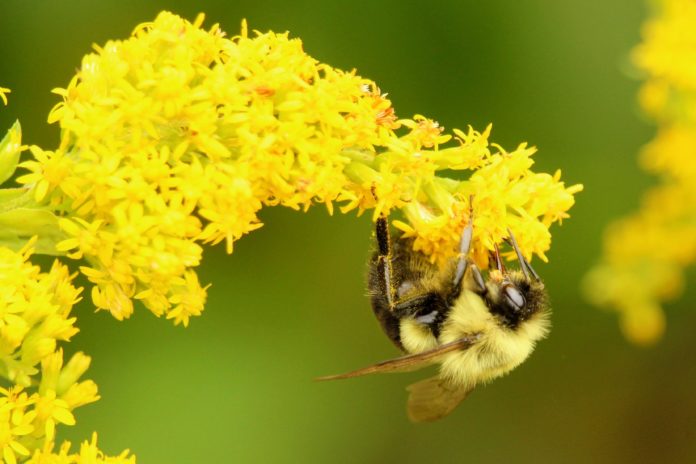Bumblebees have been a key focus of conservation efforts for many years, but a new study from Simon Fraser University suggests that for some species, the outlook isn’t as dire as we once thought. While a few bumblebee species are indeed facing rapid decline and need our help, the team behind the study found that others are doing just fine — and in some cases, their numbers are actually on the rise.
The study was led by Laura Melissa Guzman, a postdoctoral fellow in the Department of Biological Sciences at SFU, and published in Biological Conservation.
Pollinators are the bee’s knees
Bumblebees play a crucial role in food production. By pollinating plants, and therefore allowing those plants to reproduce, bumblebees are indirectly responsible for one out of every three bites of food that we eat in Canada.
And while threats like pesticides and climate change have been causing major problems for some bumblebee species — perhaps even leading to the devastating phenomenon known as colony collapse disorder — most studies that investigate bumblebee decline aren’t capturing the full picture.
Studies typically focus on one or two species rather than considering the genus as a whole, and don’t take different species’ unique foraging ranges into account. This often means that conservation efforts don’t end up focusing on the one or two species facing the greatest risks.
Given that Canada alone is home to more than 40 different bumblebee species across vast areas of land, however, a broader perspective is crucial when it comes to understanding the population as a whole, and figuring out which species are most in need of help. This is what Guzman and her colleagues set out to capture with their study.
To do this, the team created a multi-species model based on historical data that tracked where different bee species had been observed in the past, and how their numbers in these regions had changed over time. Explicitly modelling different species in this way allowed the team to avoid bias in their results: rather than assuming that a steep decline in one region meant that bumblebee populations as a whole were declining, for example, the authors could pinpoint which specific species were at risk.
Most species are doing fine — but a few need our help
They found that while a few particular species are indeed facing great threats — for example, their models revealed that the North American species Bombus bohemicus has declined by 73% — this isn’t the case for all bumblebee species.
“When we reconsidered the evidence, we found that it’s not all doom and gloom for bumble bees,” Guzman said in a press release. “In a rare case of good news for biodiversity, we found there is no evidence of community-wide decline of bees. Many species are certainly declining dramatically, but many others seem to be doing fine.”
These results will help conservationists decide which bumblebee species to prioritize. Since previous studies have shown that focusing conservation efforts on bee species that aren’t at risk may actually harm those that are, understanding which bees to focus on is crucial.
Given how important bumblebees are to agriculture and food security, it’s also important to make sure that many different bumblebee species are able to survive. This diversity will lead to greater resilience in the long run, ensuring that bumblebees and the crops they pollinate will be able to thrive.
“The whole idea is to identify which of the species are actually decreasing,” Guzman explained in an interview with CBC.
“We can focus our attention to figure out why are those two or three species decreasing and [whether] we can target the sources of that decline.”








































